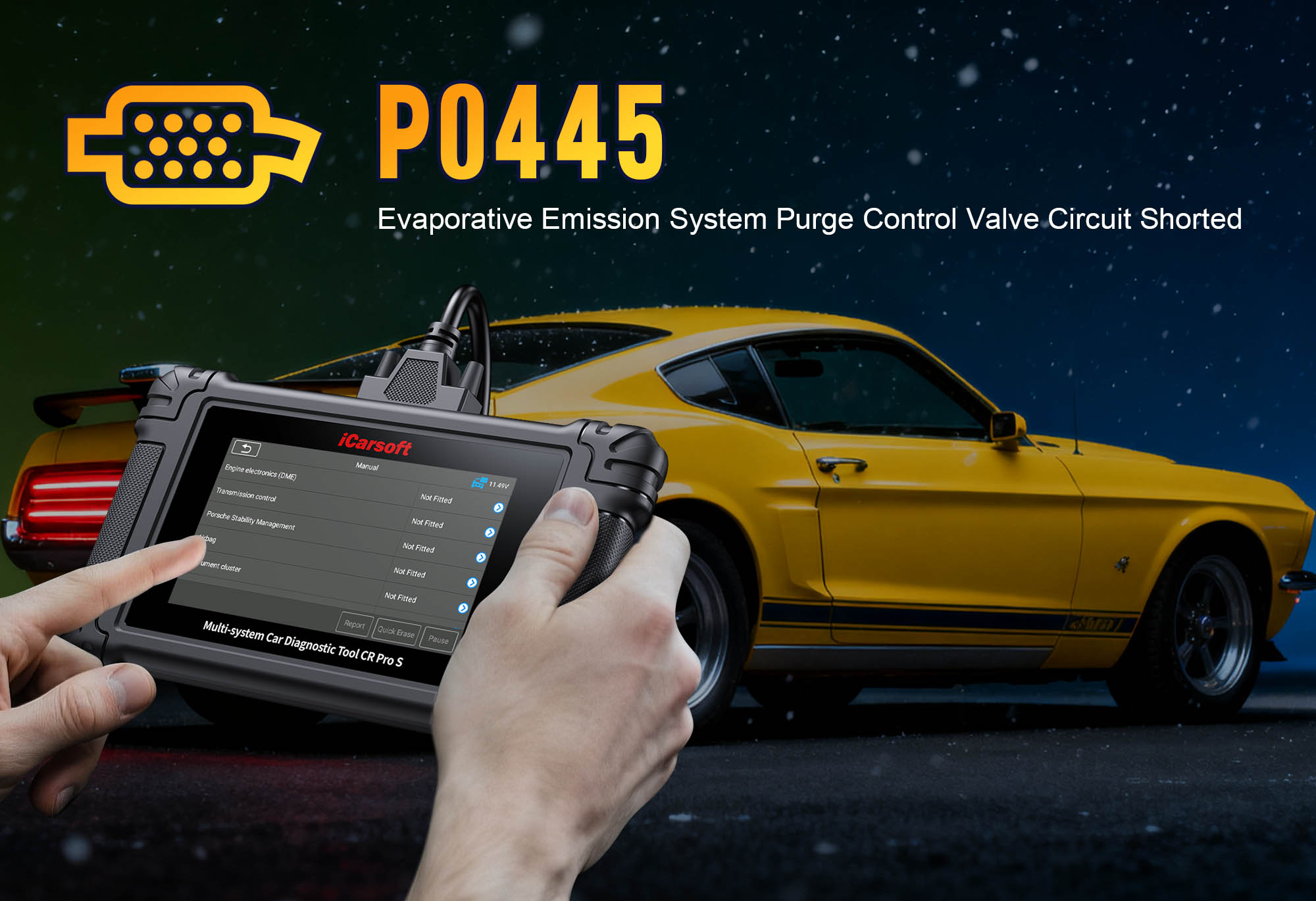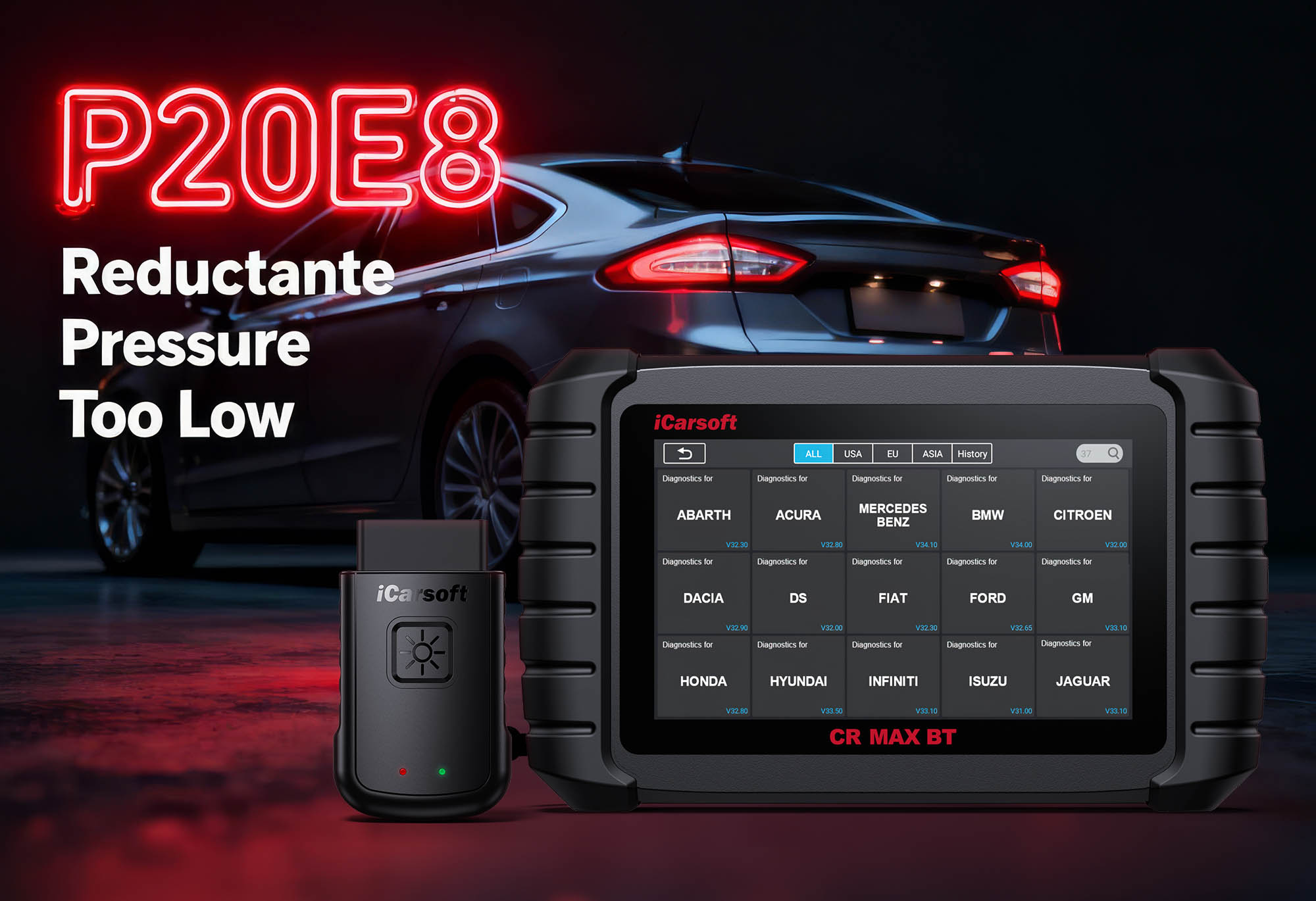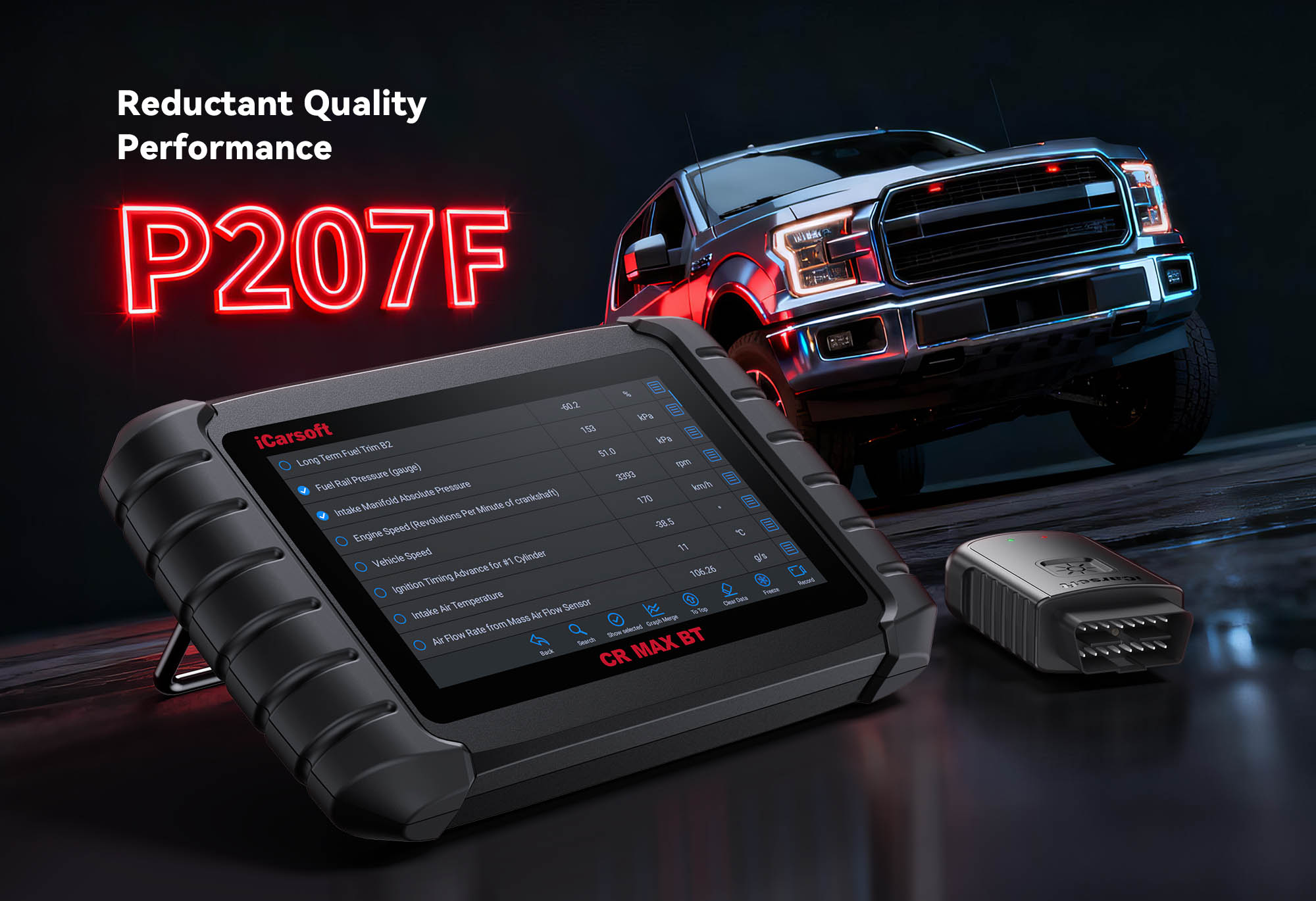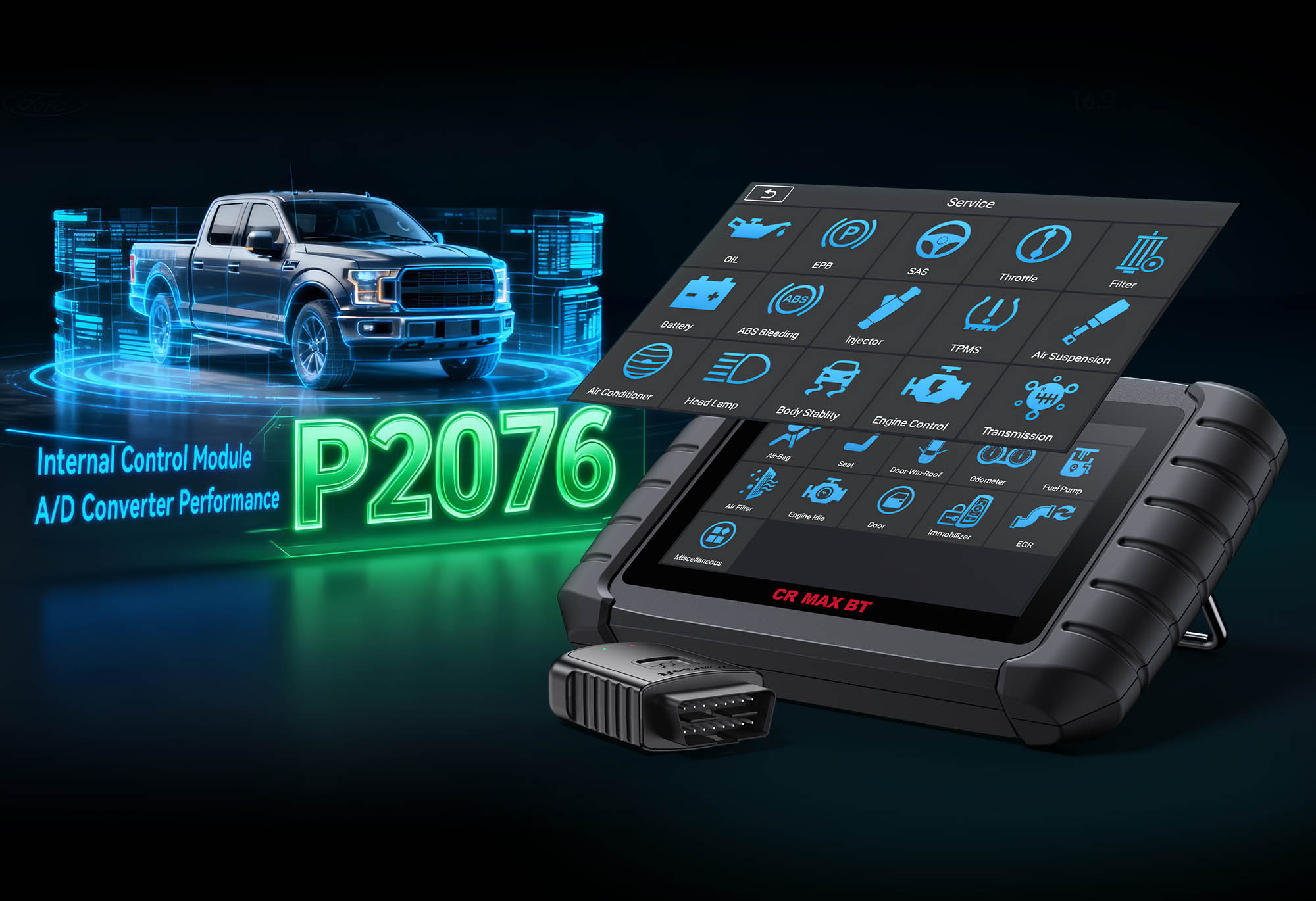Diagnose & Clear P0445 with iCarsoft CR Pro S: Fix EVAP Purge Control Valve Circuit Short
If your check engine light illuminates and you notice symptoms like a fuel odor from the rear of the vehicle, reduced fuel efficiency, or a failed emissions test, a diagnostic scan will likely return P0445. This OBD-II code stands for "Evaporative Emission (EVAP) System Purge Control Valve Circuit Short," indicating the Engine Control Module (ECM) has detected an abnormal short circuit in the electrical circuit of the EVAP purge control valve.
The EVAP system is critical for reducing harmful fuel vapors from escaping into the atmosphere: it stores fuel vapors from the gas tank in a charcoal canister, then uses the purge control valve to route these vapors to the engine for combustion when conditions are optimal (e.g., warm engine, steady speed). The purge control valve is an electric solenoid controlled by the ECM—when the ECM sends a signal, the valve opens to allow vapor flow. A "circuit short" (P0445) means the valve’s electrical circuit has a direct path to ground (e.g., damaged wire, faulty solenoid), preventing the ECM from controlling the valve properly. Left unaddressed, P0445 can lead to increased emissions, fuel waste, and even damage to the charcoal canister from unprocessed vapors.
Basic scanners may only flag "EVAP purge valve fault" but can’t test circuit continuity, valve functionality, or system密封性 (tightness). The iCarsoft CR Pro S, with its EVAP system diagnostics, live circuit monitoring, and bi-directional valve tests, solves this. Let’s walk through how to diagnose and resolve P0445 with precision.
Understanding P0445: Causes & Key Symptoms
A shorted EVAP purge control valve circuit disrupts vapor flow, leading to symptoms tied to unprocessed fuel vapors—these clues help separate circuit issues from other EVAP faults.
Key Symptoms of P0445
-
Check Engine Light Illumination: The most common indicator—triggers when the ECM detects a short in the valve circuit (may not activate immediately, but after 1–2 drive cycles).
-
Fuel Odor: Unprocessed fuel vapors escape from the EVAP system (often near the gas tank or charcoal canister), creating a strong gasoline smell—especially noticeable after refueling.
-
Reduced Fuel Efficiency: The engine can’t burn stored fuel vapors, leading to a 5–10% drop in MPG (more apparent in city driving with frequent stops).
-
Failed Emissions Tests: High hydrocarbon (HC) levels from unburned vapors cause test failures—critical for vehicle registration in most regions.
-
Intermittent Valve Operation: The valve may open/close randomly (due to intermittent shorting), leading to inconsistent vapor flow and occasional rough idling.
-
Charcoal Canister Saturation: Over time, unprocessed vapors saturate the canister, rendering it unable to store future vapors (requires costly replacement if neglected).
Common Causes of P0445
|
Cause
|
Description
|
|
Faulty EVAP Purge Control Valve
|
Internal shorting of the valve’s solenoid coil (common in valves >100,000 miles—heat and vibration degrade coil insulation).
|
|
Shorted Wiring/Connector
|
A wire in the valve’s circuit touches the vehicle’s chassis (ground) due to frayed insulation, rodent damage, or improper routing.
|
|
Corroded Connector
|
Rust or oxidation in the valve’s electrical connector creates a direct path to ground, causing a short.
|
|
Damaged ECM Driver
|
The ECM’s internal component controlling the purge valve fails, sending a constant short signal (rare but possible in 2015+ vehicles).
|
|
Water Intrusion
|
Moisture in the valve’s connector or wiring harness (from rain, car washes, or road spray) causes short circuits—common in undercarriage-mounted valves.
|
|
Aftermarket Modifications
|
Improperly installed parts (e.g., cold air intakes, exhaust systems) damage the purge valve wiring.
|
Why iCarsoft CR Pro S Excels at Diagnosing P0445
The CR Pro S outperforms basic tools with features tailored to EVAP purge valve circuit diagnostics—critical for resolving P0445 without guesswork:
Live EVAP Circuit Monitoring
Tracks real-time voltage, current, and resistance in the purge valve circuit to spot short circuits (0 ohms) or abnormal current draw.
Bi-Directional Valve Tests
Manually opens/closes the purge valve to verify functionality—confirms if the valve is stuck due to a short.
EVAP System Leak Detection
Runs smoke/pressure tests to check for leaks—prevents worsening P0445 symptoms and canister damage.
Circuit Continuity Checks
Identifies shorted wires or corroded connectors with precision, ruling out electrical faults.
Global Vehicle Coverage
Works with 500+ models (gasoline/hybrid) from Ford, Toyota, BMW—adapts to valve location (engine bay/undercarriage).
ECM Signal Verification
Tests if the ECM sends proper control signals to the valve, ruling out module faults.
Step-by-Step: Diagnose P0445 with iCarsoft CR Pro S
-
1. Locate the EVAP Purge Control Valve
First, find the valve’s position (critical for targeted testing):
1. Navigate to Component Location > Engine > Emission Control > EVAP Purge Control Valve on the CR Pro S.
2. Use the tool’s diagram to identify:
- Valve Position: Small cylindrical solenoid (1–2 inches long) with 2–3 vacuum hoses—mounted in the engine bay (near intake) or under the vehicle (near charcoal canister).
- Wiring: 2 wires (power: 12V, signal: ECM-controlled) connecting to the valve.
- Vacuum Hoses: One from charcoal canister, one to engine intake (check for intactness).
-
2. Connect the CR Pro S & Confirm the Code
1. Plug the tool into the OBD-II port (use OBDI adaptors for older models: Mercedes 38Pin, BMW 20Pin).
2. Power on and select your vehicle via Auto VIN Identify (instant specs) or manual entry.
3. Navigate to Engine > Fault Codes > Read Codes to confirm P0445. Tap Code Details for vehicle-specific tips (e.g., "Toyota Camry: Check valve resistance 10–30 Ohms").
-
3. Visual Inspection of the Purge Valve & Circuit
Spot obvious short causes with basic checks:
1. Valve Inspection: Check for cracks, broken hoses, or grease buildup—test hoses with soapy water for leaks (bubbles = replace).
2. Wiring/Connector Check: Examine for frayed wires, rodent damage, or corrosion—ensure wires don’t touch the chassis (ground).
3. Charcoal Canister Check: Locate near the gas tank—check for fuel odors or damage (saturation is a later fix).
-
4. Analyze Live EVAP Purge Valve Circuit Data
Real-time data reveals short circuits:
1. Turn ignition to "ON" (don’t start the engine).
2. Navigate to Engine > Live Data > Emission Control > EVAP Purge Control Valve and monitor:
- Circuit Voltage: 11–14V (off); 0–5V (on). P0445 = constant 0V (short to ground).
- Circuit Resistance: 10–30 Ohms (normal); 0 Ohms = short.
- ECM Signal: Pulsing 0–12V (normal); no pulse = ECM fault (less likely for P0445).
-
5. Test the EVAP Purge Valve Resistance
Verify if the valve is shorted:
1. Turn off ignition and disconnect the valve’s connector.
2. Use Multimeter Function (Ohms) to measure resistance between the valve’s two pins.
3. Compare to specs:
- Normal: 10–30 Ohms (Ford = 15–25 Ohms; Toyota = 10–18 Ohms).
- Shorted: 0 Ohms (replace valve immediately).
- Open: Infinite Ohms (triggers P0443, not P0445).
-
6. Test the Purge Valve Circuit for Shorts
If the valve is normal, check wiring/connectors:
1. Short-to-Ground Test: Measure resistance between power wire and ground (normal = >10,000 Ohms; 0 Ohms = shorted wire).
2. Signal Wire Test: Repeat for signal wire (normal = >10,000 Ohms; 0 Ohms = shorted).
3. Connector Check: Straighten bent pins (touching pins cause shorts) or replace the connector.
-
7. Perform a Bi-Directional Purge Valve Test
Verify valve operation after fixing the short:
1. Reconnect the valve’s connector and turn ignition to "ON."
2. Navigate to Special Functions > Engine > Emission Control > EVAP Purge Valve Activation.
3. Send "Open/Close" commands:
- Listen for clicking (indicates valve movement).
- Test vacuum flow (holds vacuum when closed, releases when open).
4. No clicking/vacuum = faulty valve (replace even if resistance was normal).
-
8. Run an EVAP System Leak Test
Seal leaks to prevent symptom recurrence:
1. Navigate to Special Functions > Engine > Emission Control > EVAP Leak Test.
2. Choose test type:
- Smoke Test: Look for smoke escaping from hoses/canister (replace leaking parts).
- Pressure Test: System holds pressure for 60 seconds—drop = leak (locate with soapy water).
3. Check the gas cap (tighten to 3–5 clicks or replace if cracked).
-
9. Repair & Clear P0445
Fix the root cause based on diagnostics:
1. Address specific issues:
- Shorted Valve: Replace with OEM/aftermarket valve (use Part Lookup for compatibility).
- Shorted Wiring: Repair with heat-shrink tubing or replace the harness.
- Corroded Connector: Clean or replace (ensure pin alignment).
- Leaks: Replace cracked hoses, damaged canisters, or faulty gas caps.
2. Clear the code: Navigate to Engine > Fault Codes > Clear Codes to delete P0445.
-
10. Validate the Repair
Confirm P0445 is resolved:
1. Recheck live data: Circuit voltage/resistance normal; valve responds to ECM commands.
2. Test drive 30–40 minutes (include highway and refueling—mimics trigger drive cycle).
3. Post-drive scan: Use EVAP System Scan after 100 miles to confirm no codes return.
4. (Optional) Run Emissions Check to verify HC levels are legal.
Preventing P0445 Recurrence
Use the iCarsoft CR Pro S to maintain EVAP system health long-term:
-
Purge Valve Maintenance: Set Service Reminder to inspect every 60,000 miles—clean hoses and check for corrosion.
-
Wiring Protection: Include EVAP circuit continuity tests in annual scans—use wire loom to shield undercarriage wiring from rodents.
-
Gas Cap Care: Tighten to 3–5 clicks after refueling; replace every 50,000 miles (seals degrade over time).
-
Water Prevention: Avoid deep puddles (water shorts connectors); dry connectors with compressed air after car washes.
Conclusion
P0445’s EVAP purge control valve circuit short wastes fuel and risks emissions failures—but the iCarsoft CR Pro S simplifies diagnosis with circuit tests, valve activation, and leak detection. Whether replacing a faulty valve, fixing wiring, or sealing leaks, this tool ensures you fix the root cause (not just the symptom).
With the CR Pro S, you’ll restore proper EVAP function, eliminate fuel odors, and pass emissions tests—no more costly canister replacements or guesswork about electrical faults.
FAQs About P0445 Code
Q: Can I drive with P0445?
A: Yes, but only temporarily. P0445 doesn’t cause immediate engine damage, but it reduces fuel efficiency and leads to failed emissions tests. Fix it promptly to avoid charcoal canister damage.
Q: How much does it cost to fix P0445?
A: $80–$200 for an EVAP purge valve; $50–$150 for wiring/connector repairs; $150–$300 for a charcoal canister (if saturated); $10–$30 for a gas cap. The CR Pro S saves by avoiding unnecessary canister replacements.
Q: Why does P0445 return after replacing the purge valve?
A: Likely causes: unresolved wiring shorts, hidden EVAP leaks, or a faulty ECM driver. Use the CR Pro S to retest the circuit and run a leak test—don’t just replace parts.
Q: What’s the difference between P0443 and P0445?
A: P0443 = "EVAP Purge Valve Circuit Malfunction" (open circuit or no signal); P0445 = "Circuit Short" (direct path to ground). The CR Pro S distinguishes them via resistance tests (0 Ohms = P0445; infinite = P0443).





